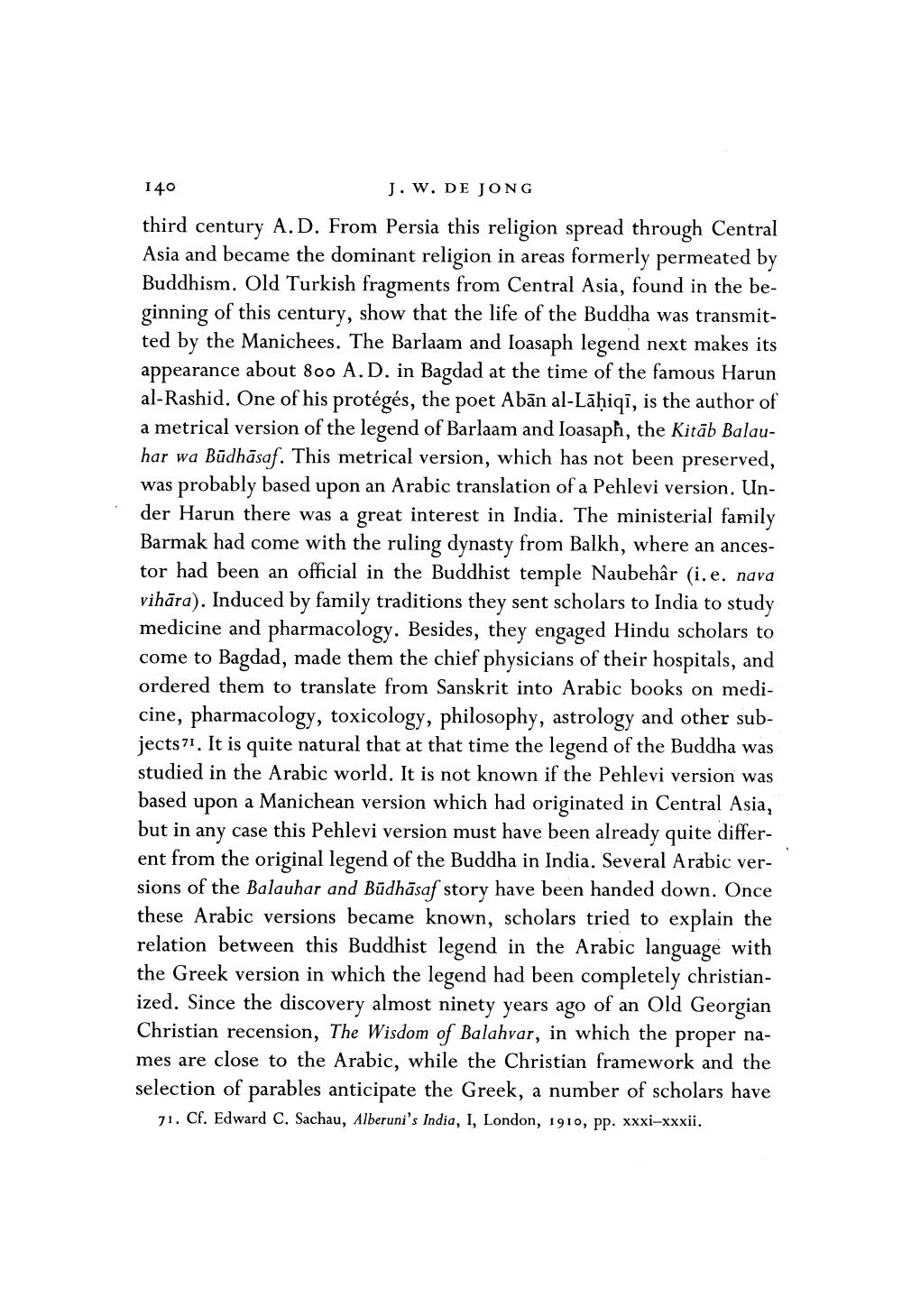________________
140
J. W. DE JONG
third century A. D. From Persia this religion spread through Central Asia and became the dominant religion in areas formerly permeated by Buddhism. Old Turkish fragments from Central Asia, found in the beginning of this century, show that the life of the Buddha was transmitted by the Manichees. The Barlaam and Ioasaph legend next makes its appearance about 800 A. D. in Bagdad at the time of the famous Harun al-Rashid. One of his protégés, the poet Aban al-Lāḥiqi, is the author of a metrical version of the legend of Barlaam and Ioasaph, the Kitāb Balauhar wa Budhāsaf. This metrical version, which has not been preserved, was probably based upon an Arabic translation of a Pehlevi version. Under Harun there was a great interest in India. The ministerial family Barmak had come with the ruling dynasty from Balkh, where an ancestor had been an official in the Buddhist temple Naubehâr (i.e. nava vihāra). Induced by family traditions they sent scholars to India to study medicine and pharmacology. Besides, they engaged Hindu scholars to come to Bagdad, made them the chief physicians of their hospitals, and ordered them to translate from Sanskrit into Arabic books on medicine, pharmacology, toxicology, philosophy, astrology and other subjects"1. It is quite natural that at that time the legend of the Buddha was studied in the Arabic world. It is not known if the Pehlevi version was based upon a Manichean version which had originated in Central Asia, but in any case this Pehlevi version must have been already quite different from the original legend of the Buddha in India. Several Arabic versions of the Balauhar and Būdhāsaf story have been handed down. Once these Arabic versions became known, scholars tried to explain the relation between this Buddhist legend in the Arabic language with the Greek version in which the legend had been completely christianized. Since the discovery almost ninety years ago of an Old Georgian Christian recension, The Wisdom of Balahvar, in which the proper names are close to the Arabic, while the Christian framework and the selection of parables anticipate the Greek, a number of scholars have
71. Cf. Edward C. Sachau, Alberuni's India, I, London, 1910, pp. xxxi-xxxii.




